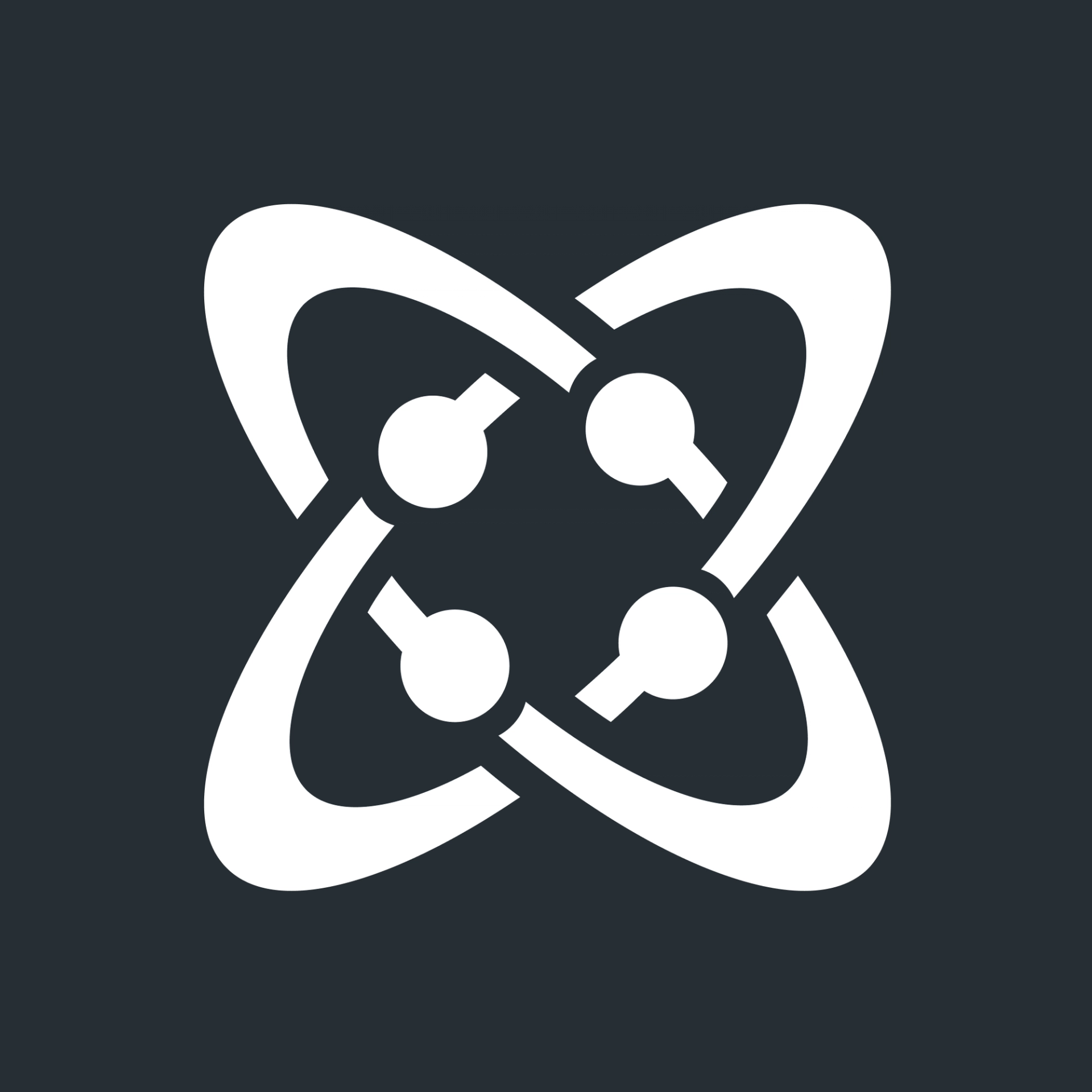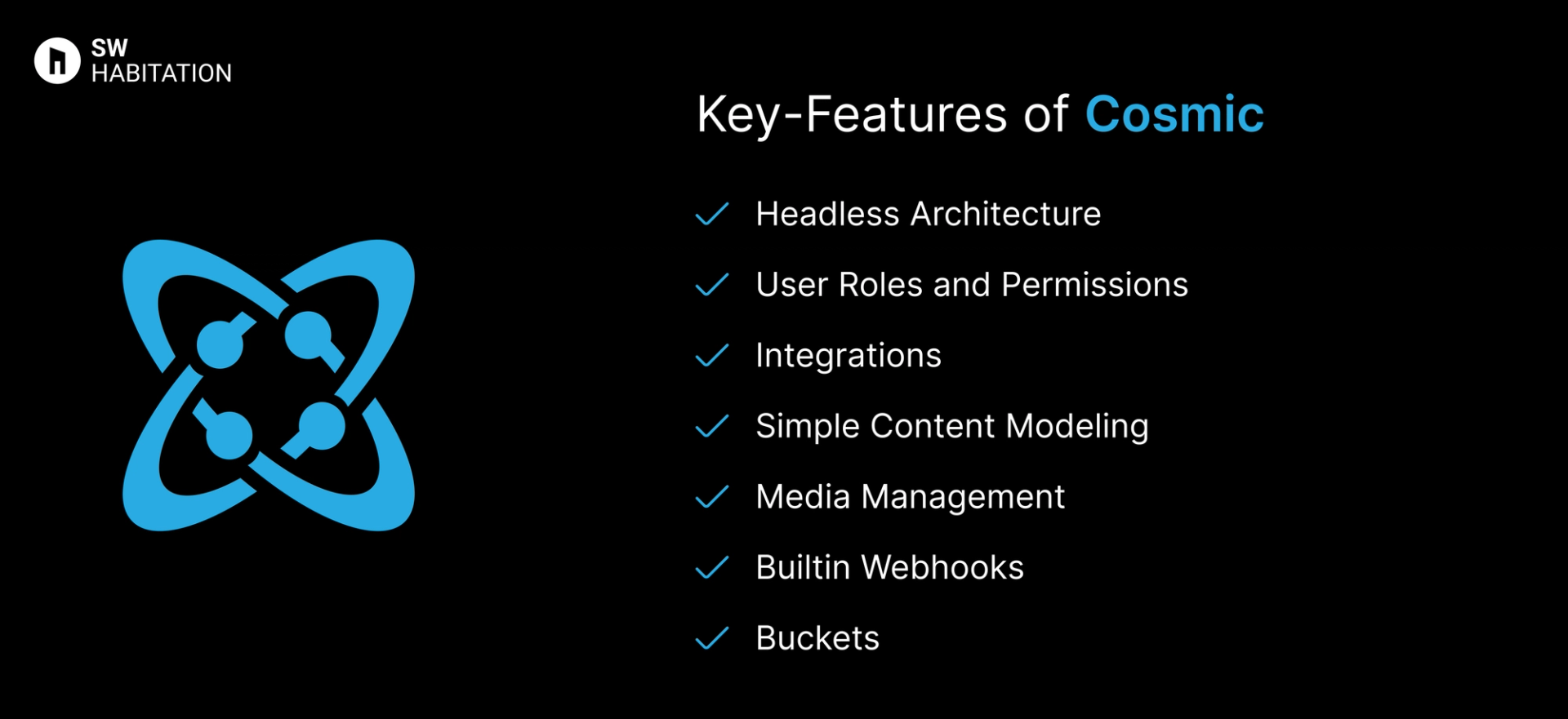Cosmic vs. Hygraph

Cosmic

Hygraph
You know, when you wanna make a website or a blog but don’t wanna mess with too much code? That’s where a CMS (Content Management System) comes in. It’s like a super easy tool that helps you add text, pictures, and videos to your site without needing to be a tech genius. You just log in, click a few buttons, and your content is live. It's quite simple, right?
What is Cosmic?
Cosmic is a headless CMS that allows you to manage content in the cloud and deliver it anywhere using APIs.
Just think of it as a content hub that lets you focus on creating and organising your content while it handles the heavy lifting of content delivery.
It’s popular among developers for its simplicity and flexibility. Whether you’re building a website, mobile app, or even a voice assistant, Cosmic makes it easy to pull content into any project.
Key Features of Cosmic


- Headless Architecture: It deliver content anywhere with its API-first approach.
- User Roles and Permissions: Manage access control for different team members.
- Integrations: Works well with frameworks like Next.js, React, and Vue.
- Simple Content Modeling: Create custom content structures without hassle.
- Media Management: Upload and manage media files effortlessly.
- Builtin Webhooks: Automate workflows by triggering events when content changes.
- Buckets: Organize content into “buckets” to keep everything neat and tidy.
Advantages of Cosmic
- Flexible: It works with any tech stack.
- Easy Setup: Get up and running in minutes with minimal configuration.
- Great for Small Projects: It's perfect for blogs, portfolios, and marketing sites.
- Content Buckets: It organize content smartly for easier management.
- API-First Approach: Ideal if you love working with APIs.
Disadvantages of Cosmic
- Pricing Can Add Up: Costs increase as content needs grow.
- Limited Free Plan: The free tier has some restrictions.
- Not Ideal for Large Projects: Lacks the complexity needed for enterprise-level projects.
What is Hygraph?
Hygraph is a headless CMS built around GraphQL, offering developers a super-efficient way to manage and query content. It shines when you need to structure content flexibly and serve it across multiple platforms be it websites, mobile apps, or even IoT devices.
Instead of traditional templates, Hygraph focuses on content modeling and API-driven delivery, making it a favorite for teams working with modern web architectures like the Jamstack.
Key Features of Hygraph


- Localization Support: Built-in multi-language content handling.
- Roles and Permissions: Manage access with thorough permissions.
- GraphQL First: Designed around GraphQL, making data fetching simple and efficient.
- Multi-Platform Delivery: Serve content across web, mobile, and other digital experiences.
- API Extensibility: Extend functionality with webhooks and remote data fetching.
- Content Modeling: Create complex content structures that fit your project’s unique needs.
Advantages of Hygraph
- GraphQL Efficiency: Fetch exactly the data you need, nothing more.
- Scalable: Handles everything from small blogs to enterprise-level applications.
- Great for Teams: Roles and permissions help manage large projects.
- Multi-Channel Support: Deliver content anywhere via APIs.
- Flexible Content Modeling: Perfect for complex data structures.
Disadvantages of Hygraph
- Pricing: Free tier is great, but advanced features can get pricey.
- GraphQL Learning Curve: Requires some GraphQL knowledge to get started.
- Complex Setup: May feel overwhelming for simpler projects.
Comparison Between Cosmic vs Hygraph
Use Cases of Cosmic
- Small Projects: Portfolios, blogs, and marketing sites.
- Projects with Simple Content Structures: No need for overly complex setups.
- Developers Who Love APIs: Pull content into any front-end framework easily.
- Startups: Quick setup with minimal infrastructure.
Use Cases of Hygraph
- Large Teams: Manage content with detailed roles and permissions.
- Multi-Platform Projects: Deliver content to websites, mobile apps, and more.
- Complex Content Models: Great for projects with diverse content structures.
- GraphQL Enthusiasts: Ideal if you’re already using GraphQL.
Other Resources
Conclusion
Headless CMS platforms make managing your website very simple and easy. Whether you’re running a blog, online store, or business, they handle the tough stuff so you can focus on your content.
With a user-friendly interface and the ability to work with any technology, you can create a site that really fits your needs.
These platforms are flexible, secure, and can grow with you. They offer features like custom content, easy editing, and integrations with other tools. Choose the one that fits your requirements and start building your dream website today 🚀
Frequently asked questions
What is Cosmic?
Cosmic is a headless CMS that helps you manage content through an easy-to-use dashboard while serving it via APIs.
Do I need to know coding to use cosmic?
Nup Not really. You can manage content without coding, but developers can use its APIs for custom setups.
Can I use Cosmic with React or Next.js?
Yup, Cosmic is super friendly with React, Next.js, and other frameworks.
Is Cosmic free?
There’s a free plan for small projects, but you’ll need a paid plan for bigger sites or more features.
Does cosmic support media files like images and videos?
Yes, You can upload and manage media files directly in the dashboard.
Does Hygraph (GraphCMS) have a free plan?
Yes, Hygraph offers a generous free plan that’s perfect for smaller projects, personal sites, or experimentation. It includes a good amount of content, API requests, and media storage
Is Hygraph (GraphCMS) good for multi-language sites?
Hygraph provides robust localization support for managing content across different languages and regions, making it ideal for global projects.
Is Hygraph (GraphCMS) frontend-agnostic?
Hygraph works seamlessly with any frontend technology, whether you’re using React, Vue, Angular, or even static site generators like Gatsby or Next.js.
Is Hygraph (GraphCMS) only for GraphQL pros?
No, While it’s built with GraphQL at its core, the UI is simple enough for non-technical users. Developers will appreciate the full flexibility of GraphQL, but you don’t need to be an expert to use it.
